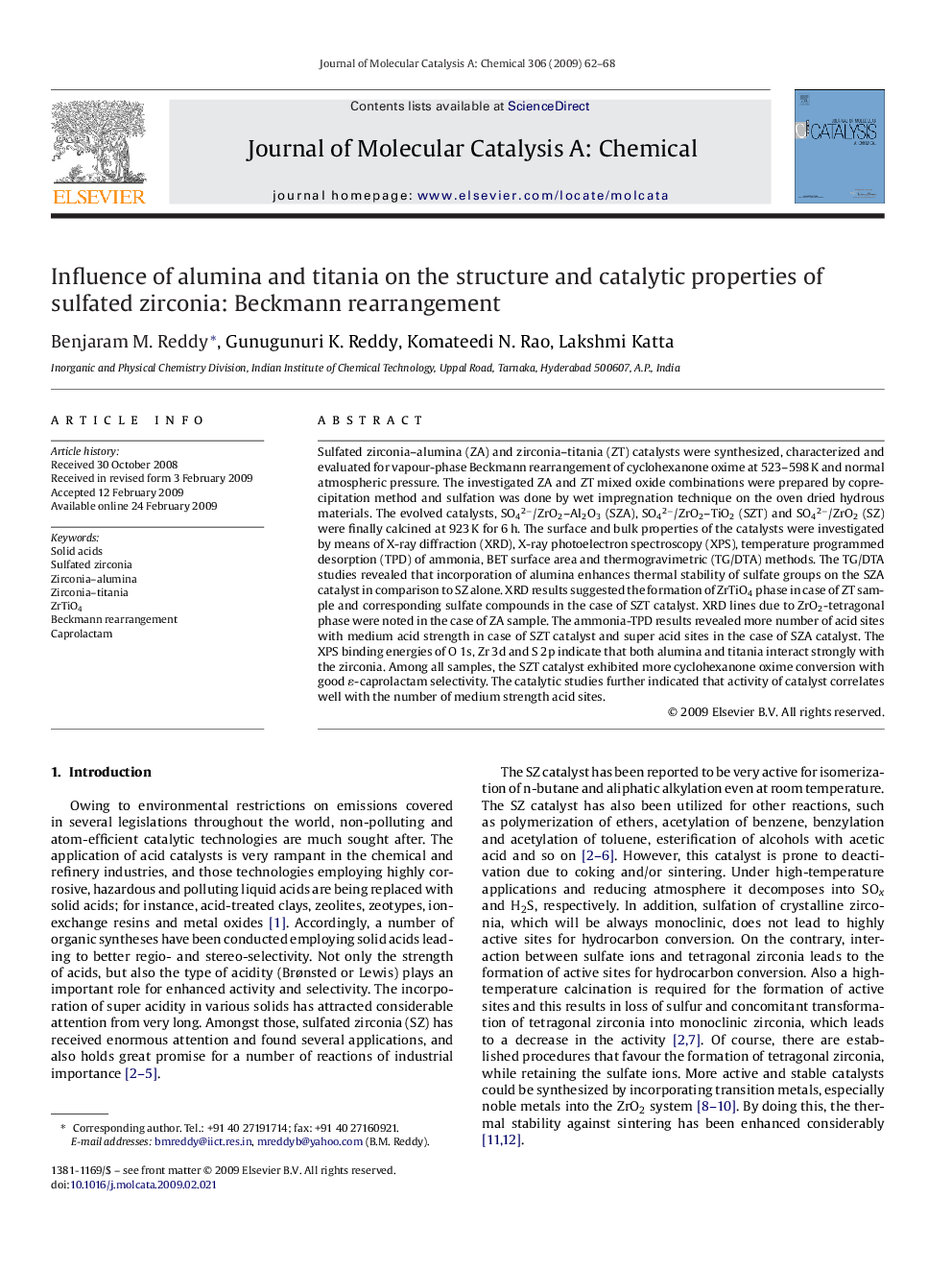| Article ID | Journal | Published Year | Pages | File Type |
|---|---|---|---|---|
| 67006 | Journal of Molecular Catalysis A: Chemical | 2009 | 7 Pages |
Sulfated zirconia–alumina (ZA) and zirconia–titania (ZT) catalysts were synthesized, characterized and evaluated for vapour-phase Beckmann rearrangement of cyclohexanone oxime at 523–598 K and normal atmospheric pressure. The investigated ZA and ZT mixed oxide combinations were prepared by coprecipitation method and sulfation was done by wet impregnation technique on the oven dried hydrous materials. The evolved catalysts, SO42−/ZrO2–Al2O3 (SZA), SO42−/ZrO2–TiO2 (SZT) and SO42−/ZrO2 (SZ) were finally calcined at 923 K for 6 h. The surface and bulk properties of the catalysts were investigated by means of X-ray diffraction (XRD), X-ray photoelectron spectroscopy (XPS), temperature programmed desorption (TPD) of ammonia, BET surface area and thermogravimetric (TG/DTA) methods. The TG/DTA studies revealed that incorporation of alumina enhances thermal stability of sulfate groups on the SZA catalyst in comparison to SZ alone. XRD results suggested the formation of ZrTiO4 phase in case of ZT sample and corresponding sulfate compounds in the case of SZT catalyst. XRD lines due to ZrO2-tetragonal phase were noted in the case of ZA sample. The ammonia-TPD results revealed more number of acid sites with medium acid strength in case of SZT catalyst and super acid sites in the case of SZA catalyst. The XPS binding energies of O 1s, Zr 3d and S 2p indicate that both alumina and titania interact strongly with the zirconia. Among all samples, the SZT catalyst exhibited more cyclohexanone oxime conversion with good ɛ-caprolactam selectivity. The catalytic studies further indicated that activity of catalyst correlates well with the number of medium strength acid sites.
Graphical abstractSulfated zirconia–alumina (SZA) and zirconia–titania (SZT) catalysts were synthesized, characterized and evaluated for vapour-phase Beckmann rearrangement of cyclohexanone oxime to ɛ-caprolactam at normal atmospheric pressure. The SZT catalyst exhibited better catalytic properties for this reaction.Figure optionsDownload full-size imageDownload high-quality image (30 K)Download as PowerPoint slide
